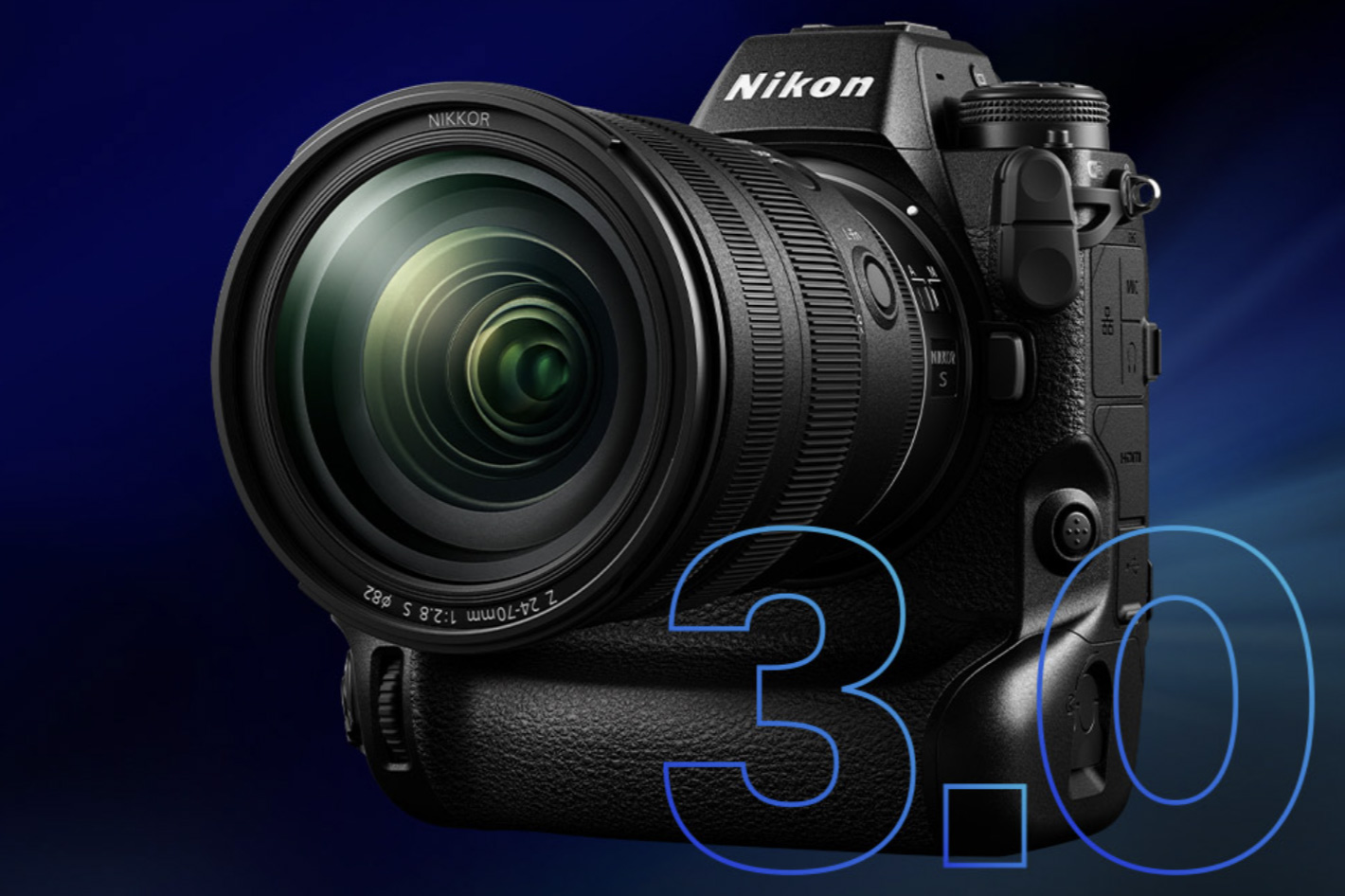
Nikon Corporation announced the release of firmware version 3.00 for its flagship full-frame/FX-format mirrorless camera, the Nikon Z 9, and what an update it its. The company says that “this firmware version 3.00 will further enhance the Z 9, offering exciting new features related to both video and still shooting, as well as improved operability and display features that respond to user needs” but one really must go beyond the surface of the announcement to discover what’s now made available for video shooters using the Nikon Z 9.
The new video features available include High-Frequency Flicker Reduction and Hi-Res Zoom, a function that enables high-resolution zooming that effectively extends the telephoto range, regardless of the lens used when recording video. So, according to Nikon, when a 4K UHD option is selected, the video is actually recorded in 8K UHD resolution then cropped to the 4K UHD frame size in real time, effectively doubling the zoom focal length while maintaining resolution that is not possible with digital zoom or the addition of zoom effects with post-production.
Hi-Res Zoom, the company claims, is available regardless of the lens used, whether a prime or a zoom lens, for example, allowing users to take advantage of the extremely shallow depth of field of an f/1.2 maximum aperture lens. Hi-Res Zoom can be assigned to the camera’s Fn1/Fn2 buttons, or the Fn ring or control ring on a lens. Using the buttons enables smooth zooming at a constant speed (Zoom speed offers a choice of slower, standard or faster) that is not possible with manual zooming, while the control ring allows users to zoom in or out as quickly or slowly as they like.
Hi-Res Zoom is available only with video recording in the following codecs: at ProRes 422 HQ 10-bit (MOV), H.265 10-bit (MOV), H.265 8-bit (MOV), or H.264 8-bit (MP4) —with image area set to FX (36 x 24). Restrictions apply to some camera features.
Furthermore, High-Frequency Flicker Reduction, which was added with firmware version 2.10 is now available for video recording and has been made easier to use for still-image shooting by adding it to photo shooting menu. Timecode synchronization across multiple Z 9 cameras is now possible, controlled by a single wireless remote control. A signal from the shutter-release button resets device timecodes. Therefore, still images cannot be captured during video recording by pressing the shutter-release button when timecode synchronization is enabled.
For photographers, the Nikon Z 9 offers solutions to cover a variety of user needs for continuous shooting. In addition to the existing C30 and C120 options, High-Speed Frame Capture+ now offers a C60 option that realizes bursts of continuous shooting of approximately 19-megapixel still images at approximately 60 fps, satisfying the diverse needs of photographers, especially those in the fields of photojournalism, sports, and bird photography, who frequently use high-speed continuous shooting to photograph their subjects. Note that image area is fixed at DX (24 x 16). If a DX lens is attached when C120 is selected, the high-speed frame capture+ setting will automatically change to C60 and image area will be fixed at DX (24 x 16). Pre-Release Capture is supported.
Users should also be aware that that High-Speed Frame Capture+ is only possible with AE/AF tracking at an image quality setting of JPEG normal only. The maximum number of frames that can be captured with a single burst is fewer than that possible with high-speed continuous shooting. Use of a Nikon-recommended memory card is recommended.
Playback operation for images captured with bursts of continuous shooting has also been improved. An Auto Series Playback function, which automatically displays images from the same burst of a continuous shooting group after the first image in the burst is displayed in playback mode, has been added, delivering a more comfortable workflow for photographers who frequently use high-speed continuous shooting for sports and bird photography.
Autofocus and other related improvements are also included. Here are the most important:
- Improved AF low-light performance (by 0.5 EV).
- When 3D-tracking is selected for AF-area mode, focus will less likely shift to a foreground obstacle that momentarily obscures the intended subject. In addition, a red option has been added for focus point color, ensuring the visibility of the focus point even against a snowy background.
- A new function override other cameras has been added, enabling easy switching between master cameras when multiple cameras are designated as masters.
- Support for the FTPS protocol offers faster and safer image transfer with encryption.
Nikon will continuously meet users’ needs through firmware updates that expand the functionality of its cameras, says the company, and this new firmware update, version 3.0, for the Nikon Z 9, surely indicates that nothing seems impossible these days.
